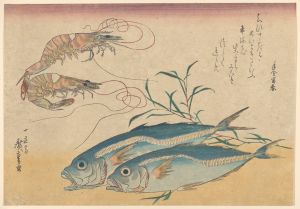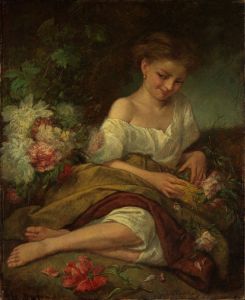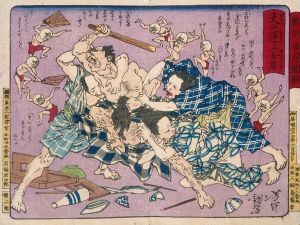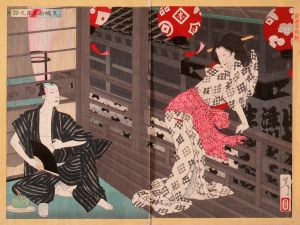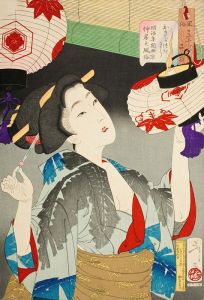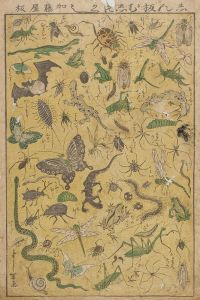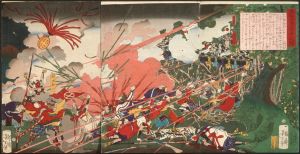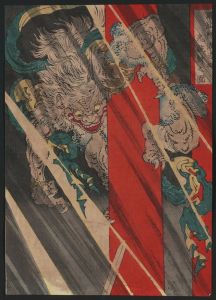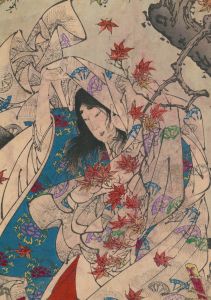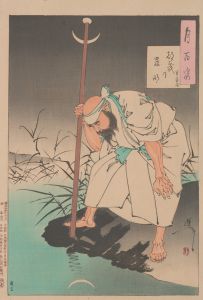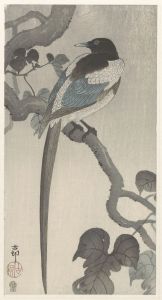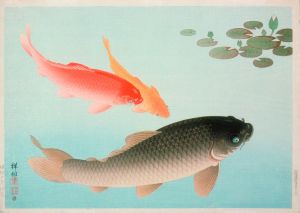
Kakitsubata o matsu wakashū
A hand-painted replica of Tsukioka Yoshitoshi’s masterpiece Kakitsubata o matsu wakashū, meticulously crafted by professional artists to capture the true essence of the original. Each piece is created with museum-quality canvas and rare mineral pigments, carefully painted by experienced artists with delicate brushstrokes and rich, layered colors to perfectly recreate the texture of the original artwork. Unlike machine-printed reproductions, this hand-painted version brings the painting to life, infused with the artist’s emotions and skill in every stroke. Whether for personal collection or home decoration, it instantly elevates the artistic atmosphere of any space.
Tsukioka Yoshitoshi (1839–1892) was a renowned Japanese artist known for his work in ukiyo-e, a genre of woodblock prints and paintings that flourished in Japan from the 17th through 19th centuries. Yoshitoshi is often celebrated for his innovative approach to traditional themes, his dynamic compositions, and his ability to capture the complexities of human emotion.
One of Yoshitoshi's notable works is "Kakitsubata o matsu wakashū," which translates to "Young Man Waiting for Irises." This piece is part of Yoshitoshi's broader exploration of Japanese folklore, literature, and historical subjects, often infused with his unique artistic style. While specific details about this particular work are limited, it is consistent with Yoshitoshi's thematic focus on the intersection of nature and human experience.
Yoshitoshi's career spanned a period of significant change in Japan, as the country transitioned from the Edo period into the Meiji era. This was a time when Japan was opening up to Western influences, and traditional Japanese art forms were being challenged by new ideas and technologies. Despite these changes, Yoshitoshi remained committed to the ukiyo-e tradition, while also incorporating elements that reflected the evolving cultural landscape.
"Kakitsubata o matsu wakashū" likely reflects Yoshitoshi's interest in the natural world, a common theme in his work. Irises, or "kakitsubata" in Japanese, are often associated with the arrival of summer and are celebrated for their beauty and elegance. In Japanese culture, irises are also linked to purification and protection, themes that may be subtly woven into the narrative of the artwork.
Yoshitoshi's work is characterized by its attention to detail, vibrant colors, and expressive figures. His prints often depict scenes from classical literature, kabuki theater, and historical events, rendered with a dramatic flair that captures the viewer's imagination. He was particularly skilled at portraying the psychological depth of his subjects, a quality that set him apart from many of his contemporaries.
Throughout his career, Yoshitoshi faced numerous challenges, including financial difficulties and mental health struggles. Despite these obstacles, he continued to produce work that was both innovative and deeply rooted in Japanese tradition. His legacy is evident in the continued appreciation of his art, both in Japan and internationally.
Today, Yoshitoshi is regarded as one of the last great masters of the ukiyo-e tradition. His work, including "Kakitsubata o matsu wakashū," continues to be studied and admired for its artistic merit and its reflection of a pivotal time in Japanese history. His ability to blend traditional themes with a modern sensibility has ensured his place in the pantheon of great Japanese artists.





